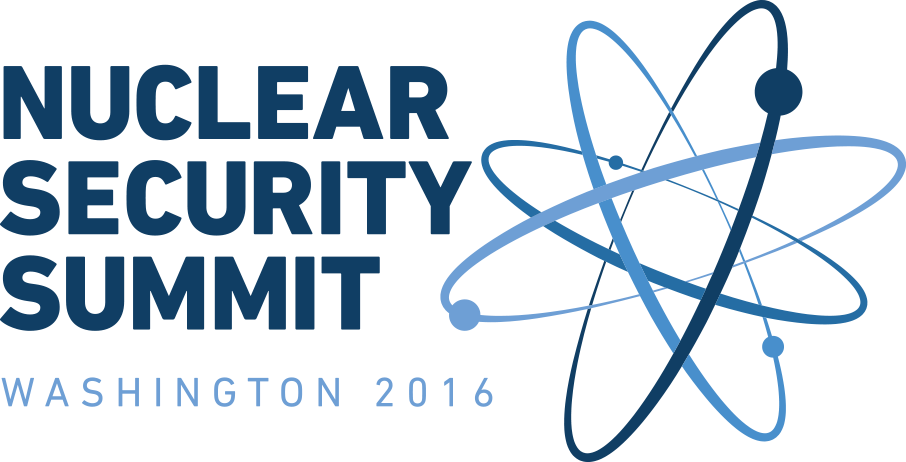Morocco-Spain Joint Statement on “Gate to Africa Exercise”
/2016 Nuclear Security Summit
Morocco and Spain Joint Statement
Building partnerships in nuclear security: “Gate to Africa Exercise” as a model of regional cooperation
General context:
At the 2010, 2012, 2014 Nuclear Security Summits, World Leaders adopted 3 Communiqués where political commitments were made to carry out a variety of activities to strengthen global efforts and build partnerships in nuclear security while underlining the central and leading role of the IAEA in the international nuclear security architecture.
In this regard and underscoring the importance of transport security of the nuclear and other radioactive materials within the international dynamic generated by NSS process in Washington, Seoul and The Hague communiqués [paragraphs 9,8 and 31 respectively], Morocco and Spain, in cooperation with the IAEA organized in Madrid on 27-29 October, 2015 a Table Top and Field Exercise named "Gate to Africa" with the presence of around 60 international observers, including representatives of the United Nations (1540 committee), the IAEA, Interpol, the IMO, the EU and the GICNT.
The opening ceremony of “Gate to Africa” took place on 26 October, 2015 and was attended by the State Secretary for Foreign Affairs of Spain and the Secretary General of the Ministry of Foreign Affairs of Morocco, in the presence of the IAEA Director General.
The Gate to Africa scenario focused on the issue of maritime transport of category 2 radioactive sources from Algeciras port to Tangier port and assumed, within the political instability in the Mediterranean and Sahel-Saharan region, that terrorists acting as truck drivers could infiltrate and hijack the ship. Various injects were raised to assess Moroccan and Spanish capabilities to plan and react to unexpected circumstances. The Field Exercise pertained to a coordinated response of many organizations including security forces to a terrorist operation while transporting two packages carried on a vessel for medical application from Algeciras port to Tangier port.
Main objectives of Gate to Africa Exercise:
The main goal of the “Gate to Africa” exercise was to discuss and evaluate preparedness and response to a nuclear security event involving the transport of radioactive material. The outcomes were to identify lessons learned, areas of improvement and good practices related to these arrangements.
The exercise also tested the use and application of nuclear security recommendations and guidance relevant to transport security, in particular the IAEA Nuclear Security Fundamentals, NSS No. 20, , and on Radioactive Material and Associated Facilities, NSS No. 14 and the Implementing Guide, Security in the Transport of Radioactive Material, NSS No.9.
Main conclusions:
The main conclusions of “Gate to Africa” include the following:
1- The “Gate to Africa” experience is a good example for improving the countries bilateral cooperation to perform a joint multilateral action plan and a better international coordination.
2- The “Gate to Africa” is a tangible experience on cooperation in the field of law enforcement forces security and safety operations.
3- The “Gate to Africa” provided for a better understanding of the complex nature of these types of shipments, as well as for the necessary planning and coordination needed for an effective radioactive material shipment.
4- The “Gate to Africa” allowed for the practical application of security tactics and radiological response procedures of the security and other response forces that participated in the exercise.
5- The “Gate to Africa” highlighted in fine the need for improved international support and coordination, in order to enhance the security regime for international shipments.
6- The Kingdoms of Morocco and Spain have developed an experience through “Gate to Africa” exercise to help the implementation of the IAEA current Nuclear Security Plan and promote the application of the IAEA’s nuclear security guidance documents.
Building partnership in nuclear security beyond the NSS 2016
To follow-up on the NSS achievements regarding nuclear security transport participating states commit to continue their efforts to working together to build and sustain national capabilities in nuclear transport security. These efforts may include, in accordance with the action plans to be adopted by NSS 2016, the following actions:
1. Proactive commitment to exchange experiences and collaborate on nuclear transport security issues.
2. Commitment to engage in bilateral and/or multilateral initiatives to implement relevant activities in the IAEA action plan, the recommendations of GICNT meetings, workshops and exercises that recognize and demonstrate opportunities for cooperation in nuclear transport security.
3. Active participation in relevant IAEA meetings and GICNT activities that provide a foundation for cooperation and exchange of information to flourish among IAEA Member States, NSS participating members, and GICNT partners.
4. Recognize and strengthen the efforts of IAEA Member States, NSS participating members, and GICNT partners in engaging in bilateral, regional or multilateral frameworks.
5. Promote coordination and collaboration between relevant international institutions and initiatives to support nuclear security capacity building.

